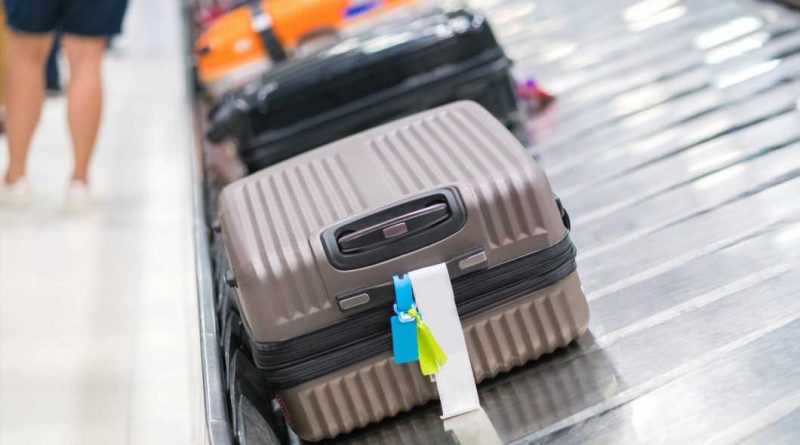What to do if an airline damages your luggage
Load Error
If you’ve ever grabbed your luggage off the baggage carousel at an airport and found it looking a little worse for the wear, you’re not the first.
According to a report by SITA, a leading specialist in air transport communications and information technology, airlines around the world “damaged or pilfered” 18 percent of the 24.8 million bags reported as “mishandled” in 2019 (the term “mishandled” includes bags that were delayed, lost or stolen, too).
When your checked bags leave your sight at the airport check-in desk to start their journey to your destination, they might pass along various conveyor belts, catch a ride on some type of vehicle or trolley and go through myriad baggage handlers’ hands on their way to being slid, tossed and pushed into the airplane’s cargo hold.
For more TPG news and deals delivered each morning to your inbox, sign up for our daily newsletter.
It’s a journey of its own, in other words. And a few scrapes and scratches along the way is to be expected.
In the worst-case scenario, luggage can go missing, as was the case back on April 24 on an American Eagle flight operated by SkyWest Airlines from Wilkes-Barre/Scranton International Airport (AVP) to Chicago (ORD). A luggage compartment in the CRJ-700 — which returned to AVP due to “a possible mechanical issue” — may have opened during flight, causing luggage to fall out.
When asked whether or not the missing bag was related to the possible mechanical issue a spokesperson for American Airlines said only that “the situation is still under investigation.”
Customers continued to Chicago on another aircraft — although one unlucky passenger did so minus their luggage.
So what happens if your bag doesn’t quite fall from the sky but is returned to you with visible damage that goes beyond minor bruises and bumps? We asked the experts.
Before leaving the airport, check your bag for damage
First of all, be aware of the condition your bag was in when you checked it.
A lost wheel, tear in the fabric casing and broken zipper are all considered damage, says Charles Leocha, chairman of travel advocacy group Travelers United. But it’s easiest to file a claim if you can prove the bag was in good condition when you gave it to the airline.
Related: 9 great suitcases worth the checked-bag fee
“Take photos of the exterior and the interior and the items packed,” Leocha said. “It gives you the proof that your bag was damaged or that something was pilfered or damaged.”
After you retrieve your bag from the luggage carousel or planeside, inspect it to see if there’s been any damage.
If so, photograph any damage to your luggage and its contents, as you may need it later to substantiate any claims.
Take a photo of the baggage tags, too, and be sure to leave them on your bag until you’ve submitted your claim.
“Passengers can, and should, file a claim with the airlines for any damages to the bag(s) and their contents,” said Douglas Kidd, executive director of the National Association of Airline Passengers, a nonprofit organization that names “improved policies for lost and damaged luggage” among its goals.
“Be aware, however, that the airlines’ Contract of Carriage may severely limit the extent to which the airline will reimburse a passenger for such damage,” Kidd said.
An airline’s Contract of Carriage can usually be found on its website, as in this example for American Airlines, and details the number of losses they’re liable for in the event of a loss, damaged or delayed bag.
Related: What to do when your luggage is delayed or lost by an airline
It’s best to report any damage to your bag before you actually leave the airport with it, Kidd said.
“It’s easiest to do in person, having everything documented on-site instead of spending time on the phone and uploading claim documents online,” Kidd wrote in an email to TPG. “Plus, you might be offered a replacement bag on the spot if you’re not picky about a new bag.”
You can make your claim at the baggage service office for the airline you flew with, often located right by the luggage carousel (it’s the same place you’d go to report a missing bag that didn’t show up on the belt).
If the baggage service office is closed, head to the airline’s check-in counter to ask who should be contacted in the event of damaged luggage.
Of course, how things are handled is going to depend very much on the airline and the damage done. But whatever you do, hold on to your damaged bag until you’ve settled your claim. The airline may pay for you to ship it to be repaired or you may need it for other proof to substantiate a claim.
And what if you don’t realize the damage to your bag or its contents until you’ve left the airport?
In that case, it might not even be bad enough to warrant a claim.
If the damage to your bag isn’t so bad that you need a new one to transport its contents and you’re flying the same airline on your return flight, then report it at the airport when you land after your return trip.
If you’re not flying back with the same airline and have already left the airport, the only thing left to do is to call the airline you flew with to report the damage and see what steps they suggest next for filing a claim (that’s when those photos you took when you landed will come in handy). Some airlines also offer online forms for making claims about damaged luggage.
Keep in mind that airlines have varying windows of time after a flight during which it’s considered valid for reporting luggage damage.
American Airlines, Delta and United, for example, require you report your claim within 24 hours of your flight for domestic flights and within seven days for international flights.
Southwest Airlines is far stricter, giving travelers just four hours from landing to make a claim about damaged luggage.
Airlines often require that baggage tags remain attached to your luggage. So a backup photo of them can come in handy if you’ve already torn them off.
Just keep in mind that, in the end, it’s the airline that decides what compensation, if you any, you’ll get for a damaged bag. And everything is considered on a case-by-case basis.
Normal wear and tear from things like overpacking and manufacturer defects are not likely to be covered. In that case, Kidd says, you can always try going to your bag’s manufacturer directly with your claim. Brands like Samsonite have very good repair services, he said, so that might be something to consider when using your next bag
Related: 12 packing hacks for flying low-cost carriers
In airline dealings as with all things in life, a calm and collected approach is sure to work better than frustration and anger.
“A banged-up bag is a bad way to begin or end a trip,” Kidd said, “but blasting the baggage claim representative for a missing wheel or hole in your bag isn’t going to help your claim or get it resolved more quickly.”
Don’t sweat the small stuff when it comes to luggage damage
Whatever happened to your luggage on its way back to you, it’s up to you to assess if the damage warrants devoting your energy and time to filing a claim at the luggage service office before you leave the airport.
A small scrape along the side of your hard case bag? Not so much. Missing wheels, a broken handle and a slash in the side of your soft suitcase? Now you’re talking.
Something else to consider, Kidd said, is whether the airline would accept your damaged bag to be checked in on a return flight.
If that seems unlikely because of the poor condition it’s in, he said, that’s more than enough reason to file a claim.
When it comes to buying luggage, consider the rough journey it takes on its travels, and pass on buying luggage that’s too dainty to hold up to the task (especially if it’s expensive and you live in fear of it getting damaged).
Consider, too, potential damage to the contents of your bag.
“A good rule of thumb is never to check anything you can’t live without,” Kidd said. “If it’s irreplaceable, sentimental or you depend on it for your well-being, keep it on you or leave it at home.”
Photo by Weerayut Ranmai / EyeEm / Getty Images
SPONSORED: With states reopening, enjoying a meal from a restaurant no longer just means curbside pickup.
And when you do spend on dining, you should use a credit card that will maximize your rewards and potentially even score special discounts. Thanks to temporary card bonuses and changes due to coronavirus, you may even be able to score a meal at your favorite restaurant for free.
These are the best credit cards for dining out, taking out, and ordering in to maximize every meal purchase.
—
Editorial Disclaimer: Opinions expressed here are the author’s alone, not those of any bank, credit card issuer, airlines or hotel chain, and have not been reviewed, approved or otherwise endorsed by any of these entities.
Source: Read Full Article




